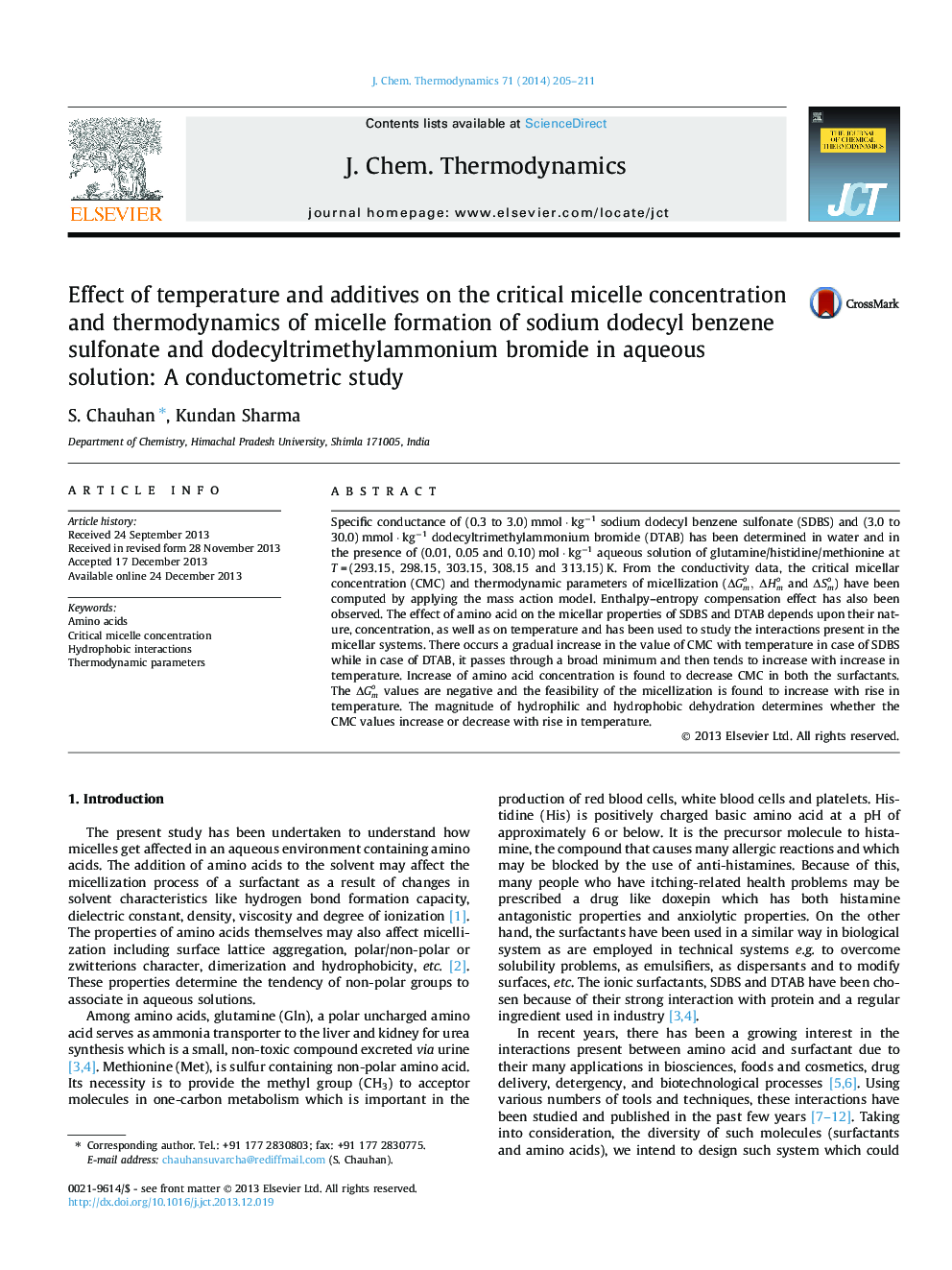| Article ID | Journal | Published Year | Pages | File Type |
|---|---|---|---|---|
| 6660848 | The Journal of Chemical Thermodynamics | 2014 | 7 Pages |
Abstract
Specific conductance of (0.3 to 3.0) mmol · kgâ1 sodium dodecyl benzene sulfonate (SDBS) and (3.0 to 30.0) mmol · kgâ1 dodecyltrimethylammonium bromide (DTAB) has been determined in water and in the presence of (0.01, 0.05 and 0.10) mol · kgâ1 aqueous solution of glutamine/histidine/methionine at T = (293.15, 298.15, 303.15, 308.15 and 313.15) K. From the conductivity data, the critical micellar concentration (CMC) and thermodynamic parameters of micellization (ÎGmo,ÎHmo and ÎSmo) have been computed by applying the mass action model. Enthalpy-entropy compensation effect has also been observed. The effect of amino acid on the micellar properties of SDBS and DTAB depends upon their nature, concentration, as well as on temperature and has been used to study the interactions present in the micellar systems. There occurs a gradual increase in the value of CMC with temperature in case of SDBS while in case of DTAB, it passes through a broad minimum and then tends to increase with increase in temperature. Increase of amino acid concentration is found to decrease CMC in both the surfactants. The ÎGmo values are negative and the feasibility of the micellization is found to increase with rise in temperature. The magnitude of hydrophilic and hydrophobic dehydration determines whether the CMC values increase or decrease with rise in temperature.
Related Topics
Physical Sciences and Engineering
Chemical Engineering
Chemical Engineering (General)
Authors
S. Chauhan, Kundan Sharma,
